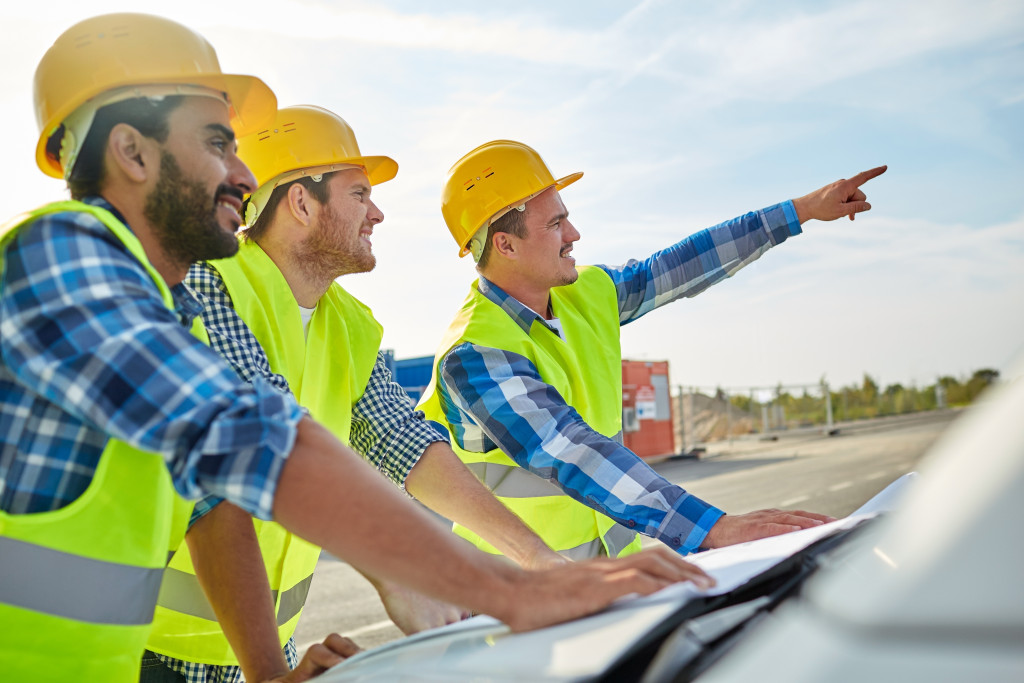Safety is always the number one priority on any construction site. Unfortunately, there were nearly a thousand fatalities in the industry last year, making it one of the most hazardous industries in the world. Moreover, accidents can happen in the blink of an eye, so it’s crucial to have safety protocols and procedures in place to protect your crew. Here are five ways to keep your team safe while working on your latest project.
Wear Personal Protective Equipment (PPE)
When it comes to personal protection, your company can never go wrong with requiring employees to wear PPE. This includes hard hats, goggles, gloves, and steel-toe boots. Wearing the proper PPE can help prevent injuries in a fall or other accident.
Additionally, you should have PPE for the pandemic. This includes face coverings required in many states for indoor work.
Lastly, consider investing in slings and chains if your project requires your employees to go to high places. A robust double-leg chain sling is usually what you only need. This kind of chain sling goes across the chest and has two leg loops. This makes it secure for your workers and will help prevent accidents.
Inspect Equipment and Tools
Ensuring all equipment and tools are in good working condition before each use can help prevent accidents and injuries. Inspect power cords for fraying or damage, and check for loose screws or bolts on hand tools. You should also start implementing these protocols for your equipment and tools:
Preventive Maintenance
Maintenance is crucial for keeping your equipment and tools functioning correctly. Implement a preventive maintenance program to help avoid potential accidents and injuries.
Equipment Safety Protocols
In addition to general safety protocols, you should also have specific protocols for using certain equipment. For example, if your crew uses a crane, they should be thoroughly trained to operate it safely.

Implement a Safety Briefing
Before your crew begins work for the day, take a few minutes to review the safety protocols for the job site. This is an excellent time to review potential hazards and remind everyone of the proper PPE they should wear. Here are some other things you should have in your safety briefing:
Emergency Procedures
You should update your emergency procedures regularly and post them in a visible location on the job site. Include procedures for fires, medical emergencies, and evacuations.
Site-Specific Hazards
Review any site-specific hazards with your crew before they begin work. This might include wet floors, exposed wiring, or trip hazards. These things are dynamic and change almost daily, so ensure you’re on top of this information.
Create a system for Reporting Unsafe Conditions
Encourage employees to speak up if they see something unsafe on the job site. Whether it’s a slippery surface or a piece of equipment that looks damaged, addressing potential hazards can help prevent accidents. Here’s a simple guide to creating such a system:
- Designate someone to be in charge of safety on the job site. This person should clearly understand the company’s safety policies and procedures.
- Create a system for employees to report unsafe conditions on the job site. It might be a physical reporting form that employees can fill out or an online reporting system.
- Make sure all employees know how to use the reporting system.
- Follow up on reports of unsafe conditions promptly. Address the issue and make sure it’s been resolved before allowing work to resume.
- Keep track of all reports of unsafe conditions. It will help you identify any trends and take steps to prevent future accidents.
Reporting potential hazards efficiently can help your employees avoid any accidents on-site. It can also identify areas where your safety protocols need improvement.
Enforce Safety Policies
Once you’ve created safety policies, it’s crucial to enforce
Have a First-Aid Kit Available
Accidents can happen even when you’re taking all the necessary precautions. That’s why it’s essential to have a first-aid kit with supplies like bandages, gauze, and antiseptic wipes. This will help you be prepared in case someone does get injured on the job site.
Additionally, you should always have medical personnel on standby in an emergency. Finally, if your crew works near a busy road, consider having a designated flagger direct traffic away from the job site.
The average cost of a singular accident in construction is more costly when compared to any other accident in other industries. Following these five safety tips can help create a safe work environment for your construction crew. It can also save you money in the long run. Remember that accidents can happen anytime, so it’s always good to be prepared.
